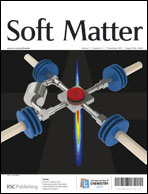The ability to precisely trap, transport and manipulate micrometre-sized objects, including biological cells, DNA-coated microspheres and microorganisms, is very important in life science studies and biomedical applications. In this study, the acoustic radiation force in an ultrasonic standing wave field is used for micro-objects manipulation, a technique termed as acoustophoresis. Free surfaces of liquid droplets are used as sound reflectors to confine sound waves inside the droplets. Two techniques were developed for precise control of droplet shapes: edge pinning and hydrophilic/hydrophobic interface pinning. For all tested droplet shapes, including circular, annular and rectangular, our experiments show that polymer microparticles can be manipulated by ultrasound and form a variety of patterns, for example, concentric rings and radial lines in an annular droplet. The complexity of the pattern increases with increasing frequency, and the observations are in line with simulation results. The acoustic manipulation technique developed here has the potential to be integrated into a more complex on-chip microfluidic circuit. Especially because our method is well compatible with electrowetting technology, which is a powerful tool for manipulating droplets with free surfaces, the combination of the two methods can provide more versatile manipulation abilities and may bring a wealth of novel applications. In the end, we demonstrate for the first time that acoustophoresis can be used for manipulating Caenorhabditis elegans.

You have access to this article
 Please wait while we load your content...
Something went wrong. Try again?
Please wait while we load your content...
Something went wrong. Try again?


 Please wait while we load your content...
Please wait while we load your content...